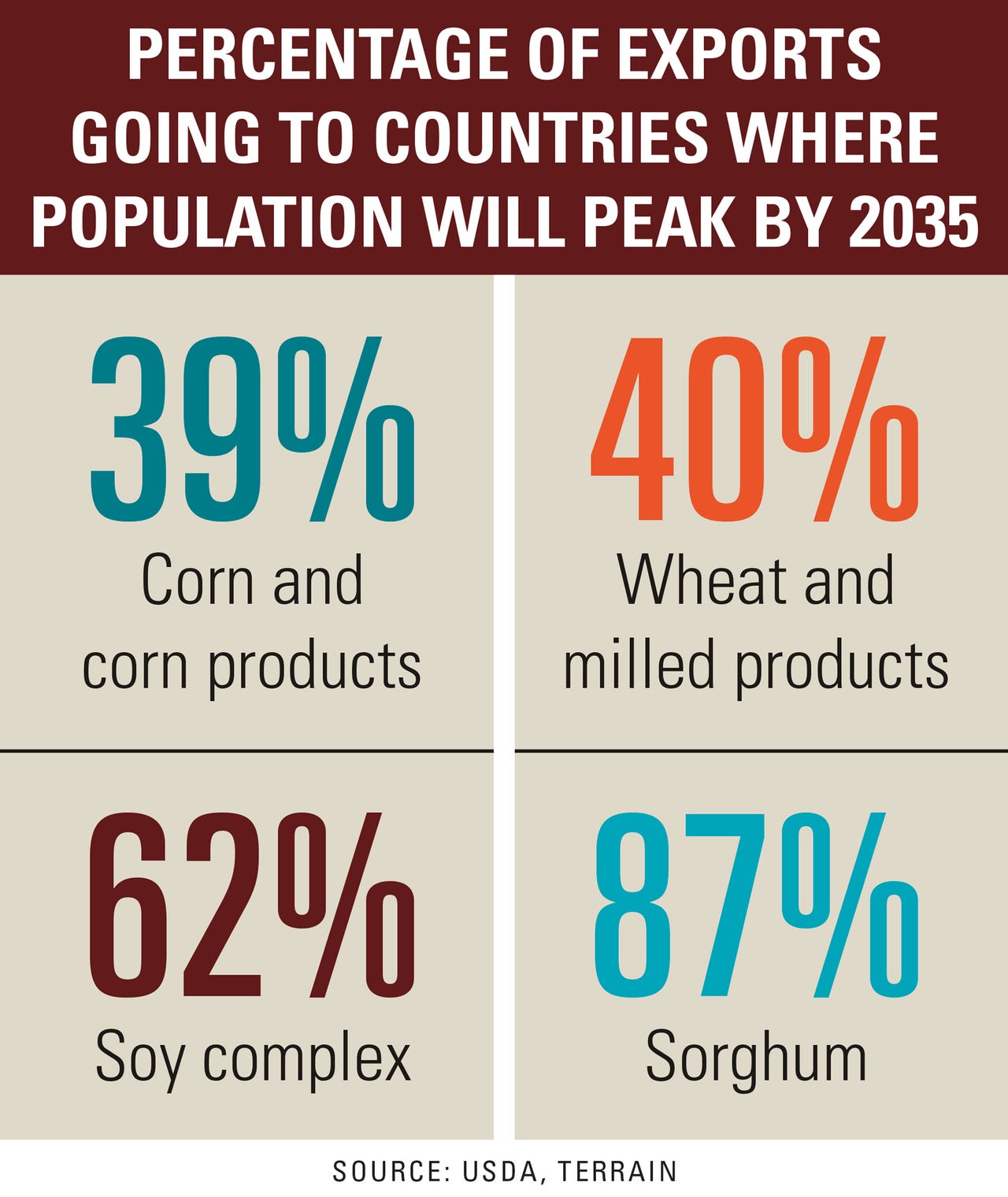With a rising global population 50 years ago, U.S. farmers shouldered the responsibility of growing enough food to feed the world.
But what happens when the world doesn’t need that much food?
With the global population still growing but peaking country by country, that’s the question economists at Terrain sought to answer in a study called “The Big Shrink.”
“I think the U.S. farmer took on feeding the world. They did that, and they should be proud of it,” says Matt Clark, Terrain analyst.
Now, however, it’s time to figure out what’s next for U.S. agriculture.
To be clear, the world population isn’t expected to peak until 2084, according to a United Nations estimate. But as with any data, the devil is in the details, especially for U.S. ag commodities.
As U.S. leaders look at trade deficits and seek to level the exchange of goods, one underlying issue is which countries need to buy ag commodities — and how much. While some, such as Brazil, grow their own, others don’t need as much as they once did because their population already peaked. China’s, for instance, peaked in 2021.

“A lot of our key partners, such as Japan, South Korea, China, some European Countries, have already hit that mark. They’re already at peak population,” Clark says.
So, the single focus of growing more food shifts to two:
- Gain access to countries with increasing populations. “This makes exports more important in the short run, and it shines a light on areas that maybe we’ve tried for a long time to get in but have been slow to access, such as India or Africa,” Clark says.
- Move away from quantity of production to higher-value goods. Think bioenergy, such as ethanol. That’s why Terrain’s report doesn’t compare the amount of ag commodities a country is buying but rather the value of those commodities. It’s about the paycheck.
That’s what the commodity groups and national leadership can do. What can farmers do to manage the risk of fewer mouths to feed?
“In ag, you’ll continue to see diversified revenue streams,” Clark says. “When you think about most large farms today, how many of them also have a little agritourism? Or they’ve got a shed that they rebuilt that’s a great wedding venue, which serves a community and adds a different revenue stream? And that nexus of ag and energy is always going to be there.”
Clark says farmers mostly need to reassess. “Growing up I thought of farmland as the tool to grow commodities,” he says. “Now we have to think of farmland as a commodity.”
Ultimately, Clark says Terrain is turning up the volume on this conversation so farmers get ready.
“This isn’t doom and gloom. Farmers have time,” Clark says. “It makes a lot of sense to keep pushing those policies that grow the market but also feed those outlets that are less dependent on the feeding-the-world mission. We have time to do both.”
